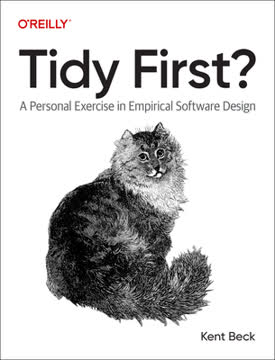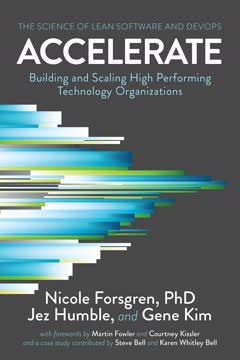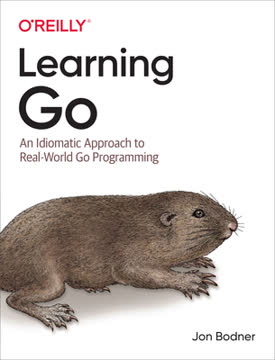重点摘要
1. Kubernetes:云原生应用的基础
Kubernetes 是一个容器编排平台,构成了其他平台的基础。
分布式原语。 Kubernetes 引入了一组新的分布式原语,用于构建云原生应用。这些原语包括 Pods(容器组)、Services(用于网络和负载均衡)以及各种控制器来管理应用生命周期。这些原语提供了比传统的进程内构建块更高的抽象层次,使开发者能够专注于应用逻辑而不是基础设施问题。
声明式方法。 Kubernetes 采用声明式模型,开发者指定应用的期望状态,平台会持续工作以维持该状态。这种方法简化了应用管理,并实现了自动修复和扩展。Kubernetes 的关键概念包括:
- 容器:打包的、隔离的应用代码和依赖项单元
- Pods:最小的可部署单元,由一个或多个容器组成
- Services:用于访问 Pods 组的稳定网络端点
- 标签和注释:用于组织和选择资源的元数据
- 命名空间:用于资源隔离和多租户的虚拟集群
2. 基础模式:容器化应用的构建块
要实现完全自动化,云原生应用必须高度可观察,以便 Kubernetes 能够检测应用是否运行以及是否准备好处理请求。
可预测的需求。 应用应声明其资源需求和运行时依赖项。这使得 Kubernetes 能够做出智能的放置和扩展决策。关键方面包括:
- 资源配置文件:指定 CPU 和内存请求和限制
- 服务质量(QoS)类别:尽力而为、突发和保证
- Pod 优先级:指示 Pods 的相对重要性
声明式部署。 Kubernetes 提供了以最小停机时间更新应用的机制:
- 滚动更新:逐步用新 Pods 替换旧 Pods
- 蓝绿部署:在两个版本之间切换流量
- 金丝雀发布:逐步增加新版本的流量
健康探测和管理生命周期。 应用应实现健康检查并响应生命周期事件:
- 存活探测:检测应用是否在运行
- 就绪探测:确定应用是否准备好处理流量
- 生命周期钩子:响应启动和停止事件
3. 行为模式:Pod 管理和服务发现
单例服务模式确保一次只有一个应用实例处于活动状态,同时具有高可用性。
作业管理。 Kubernetes 提供了管理不同类型工作负载的抽象:
- 批处理作业:用于运行有限的、可完成的任务
- 定期作业(CronJobs):用于计划的、重复的任务
- 守护进程服务:用于在每个节点上运行系统级服务
有状态服务。 Kubernetes 提供 StatefulSets 来管理需要稳定网络身份和持久存储的应用:
- 有序部署和扩展
- 稳定的网络身份
- 每个 Pod 的持久存储
服务发现。 Kubernetes 提供了多种服务发现机制:
- ClusterIP 服务:用于内部通信
- NodePort 和 LoadBalancer 服务:用于外部访问
- Ingress:用于基于 HTTP 的路由和负载均衡
4. 结构模式:在 Pods 内组织容器
辅助容器在不改变现有容器的情况下扩展和增强其功能。
多容器 Pods。 Kubernetes 允许多个容器组合成一个 Pod,从而实现各种模式:
- 初始化容器:在主容器启动前执行初始化任务
- 辅助容器:为主容器添加功能
- 适配器:标准化异构应用的输出
- 代理:代理与外部服务的通信
这些模式促进了关注点分离、模块化和应用设计的可重用性。它们允许开发者从更简单、单一用途的容器中组合复杂应用,同时利用 Pod 抽象提供的共享上下文和资源。
5. 配置模式:为各种环境调整应用
ConfigMaps 和 Secrets 允许将配置信息存储在专用资源对象中,便于通过 Kubernetes API 管理。
外部化配置。 Kubernetes 提供了多种机制来管理应用配置:
- 环境变量:用于简单的键值对
- ConfigMaps:用于非敏感配置数据
- Secrets:用于敏感信息(如密码、API 密钥)
不可变配置。 为确保跨环境的一致性,可以将配置打包到不可变的容器镜像中:
- 配置容器:用于存储配置数据的专用镜像
- 初始化容器:用于将配置复制到共享卷中
配置模板。 对于在环境之间略有不同的复杂配置:
- 模板处理:使用如 Gomplate 等工具生成配置文件
- 初始化容器:在 Pod 初始化期间处理模板
这些模式使开发者能够将配置与应用代码分离,促进可移植性并减少环境特定问题的风险。
6. 高级模式:扩展 Kubernetes 和管理复杂工作负载
操作器是一个 Kubernetes 控制器,它理解两个领域:Kubernetes 和其他领域。通过结合这两个领域的知识,它可以自动化通常需要同时理解这两个领域的人类操作员的任务。
控制器和操作器。 Kubernetes 可以扩展以管理复杂应用:
- 控制器:基于资源变化实现自定义行为
- 操作器:编码领域特定知识并自动化复杂操作
- 自定义资源定义(CRD):定义新资源类型
框架和工具。 多个项目促进了控制器和操作器的开发:
- 操作器框架:用于构建基于 Go 的操作器
- Kubebuilder:用于脚手架和管理操作器项目
- Metacontroller:用于以任何语言实现操作器
这些模式使开发者能够扩展 Kubernetes 的功能,并在集群内自动化复杂的、应用特定的操作。
7. 扩展和构建:弹性应用和集群内镜像创建
Kubernetes 中的自动扩展允许我们定义一个变化的应用容量,而不是固定的容量,从而确保有足够的容量来处理不同的负载。
弹性扩展。 Kubernetes 提供了多种扩展应用的机制:
- 水平 Pod 自动扩展(HPA):调整 Pod 副本数量
- 垂直 Pod 自动扩展(VPA):修改资源请求和限制
- 集群自动扩展:根据资源需求添加或删除节点
镜像构建。 Kubernetes 可用于在集群内构建容器镜像:
- OpenShift Build:一个集成系统,使用各种策略构建镜像
- Knative Build:一个 Kubernetes 原生的构建框架
- 无守护进程构建:如 img、buildah 和 Kaniko 等工具,用于无根镜像创建
这些模式使开发者能够创建弹性、自我调整的应用,并通过利用 Kubernetes 的调度和资源管理能力简化镜像构建过程。
最后更新日期:
FAQ
What's Kubernetes Patterns about?
- Focus on Cloud-Native Applications: Kubernetes Patterns by Bilgin Ibryam and Roland Huß is a guide to designing cloud-native applications using Kubernetes, emphasizing scalable, resilient, and manageable applications.
- Reusable Design Elements: The book highlights reusable elements for application design, offering practical solutions to common deployment challenges on Kubernetes.
- Real-World Use Cases: It draws from real-world experiences to illustrate effective application of patterns, making it valuable for both new and experienced Kubernetes users.
Why should I read Kubernetes Patterns?
- Enhance Kubernetes Skills: Ideal for developers aiming to deepen their understanding of Kubernetes and improve application design skills with best practices and proven patterns.
- Learn from Experts: Written by experienced practitioners, it encapsulates lessons from various projects, providing readers with extensive knowledge in cloud-native application design.
- Practical Guidance: The patterns are actionable and applicable to real-world scenarios, serving as a practical guide for cloud-native development.
What are the key takeaways of Kubernetes Patterns?
- Understanding Kubernetes Concepts: Covers essential concepts like Pods, Services, and Deployments, providing a solid foundation for building robust applications.
- Design Patterns for Apps: Introduces patterns like Predictable Demands and Health Probes, crucial for creating scalable and maintainable applications.
- Advanced Topics: Delves into advanced patterns like Operators and Controllers, essential for extending Kubernetes functionality and managing complex applications.
What are the foundational patterns discussed in Kubernetes Patterns?
- Predictable Demands: Emphasizes declaring resource requirements for containers to help Kubernetes make informed scheduling decisions.
- Declarative Deployment: Focuses on deployment strategies like Rolling Updates and Blue-Green Deployments for managing application updates with minimal downtime.
- Health Probes: Discusses implementing liveness and readiness probes for monitoring application health, ensuring only healthy instances serve traffic.
How does Kubernetes Patterns define a Job and its purpose?
- Batch Job Definition: A Job manages the execution of Pods until a specified number successfully terminate, designed for finite tasks needing reliable completion.
- Reliability and Scalability: Ensures tasks are executed to completion by automatically restarting Pods as needed, suitable for data processing or batch jobs.
- Parallel Execution: Jobs can run multiple Pods in parallel, allowing efficient processing of tasks divided into smaller, independent units.
What is the significance of the DaemonSet pattern in Kubernetes Patterns?
- Infrastructure-Focused Pods: Deploys Pods on every node or specific subsets, providing essential infrastructure services like logging or monitoring.
- Automatic Management: Manages the lifecycle of Pods automatically, simplifying infrastructure service management in a Kubernetes cluster.
- Node-Specific Operations: Useful for applications needing node-specific operations, such as accessing local storage or monitoring node health.
How does Kubernetes Patterns explain the Singleton Service pattern?
- Single Active Instance: Ensures only one instance of a service is active, crucial for tasks like scheduled jobs or message processing.
- High Availability: Maintains a single active instance while emphasizing high availability using controllers like StatefulSets or ReplicaSets.
- Service Discovery: Uses headless Services for stable network identities, ensuring consistent access to the singleton service.
What are the advanced patterns covered in Kubernetes Patterns?
- Operators: Extends Kubernetes functionality by managing complex applications through custom controllers, automating deployment and scaling.
- Elastic Scale: Discusses horizontal and vertical scaling strategies, using features like Horizontal Pod Autoscaling for dynamic resource adjustment.
- Image Builder: Focuses on creating container images within the Kubernetes cluster, enhancing efficiency and reducing complexity.
What is the Downward API in Kubernetes Patterns?
- Metadata Injection: Allows Kubernetes to inject Pod metadata into applications as environment variables or files, promoting self-awareness.
- Dynamic and Static Data: Provides dynamic data like Pod IP and static data like resource limits, crucial for logging and monitoring.
- Kubernetes-Agnostic Applications: Enables applications to remain agnostic to Kubernetes, promoting portability and reusability.
How does the Init Container pattern work in Kubernetes Patterns?
- Separation of Concerns: Allows initialization tasks to be separated from main application containers, handling tasks like setting up permissions independently.
- Sequential Execution: Init Containers run in sequence, ensuring each completes before the next starts, guaranteeing readiness for the main application.
- Resource Sharing: Shares network namespace and storage volumes with application containers, simplifying environment preparation.
What is the Sidecar pattern in Kubernetes Patterns?
- Enhancing Functionality: Involves adding a secondary container to a Pod to enhance or extend the primary container's functionality.
- Common Use Cases: Used for logging, monitoring, or proxying requests, allowing the main application to focus on core functionality.
- Collaboration Between Containers: Facilitates resource sharing and communication within the same Pod, leading to efficient applications.
How does Horizontal Pod Autoscaling work in Kubernetes Patterns?
- Dynamic Scaling: Automatically adjusts Pod replicas based on CPU utilization or other metrics, ensuring applications handle varying loads.
- Configuration Requirements: Requires defined resource requests and a running metrics server for informed scaling decisions.
- Continuous Monitoring: Monitors specified metrics and adjusts replicas, maintaining optimal resource utilization and performance.
评论
《Kubernetes Patterns》获得了大多数正面评价,读者称赞其内容引人入胜、结构清晰、实例实用。许多人认为这本书对于理解Kubernetes概念和最佳实践非常有价值。一些评论者欣赏书中解释模式的方法,而另一些人则认为某些“模式”只是基本的Kubernetes功能。该书推荐给希望深入了解Kubernetes的开发人员和系统管理员,尽管对于有经验的从业者来说可能不那么有用。总体而言,这本书被认为是构建云原生应用程序的有用资源。
Similar Books














